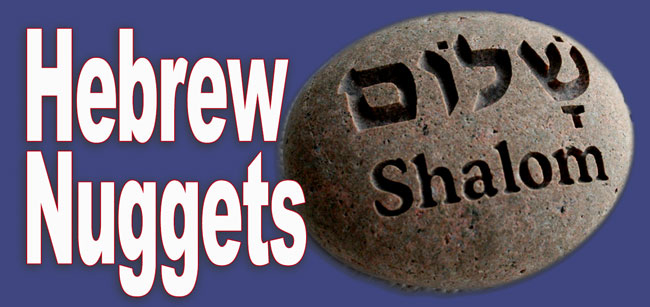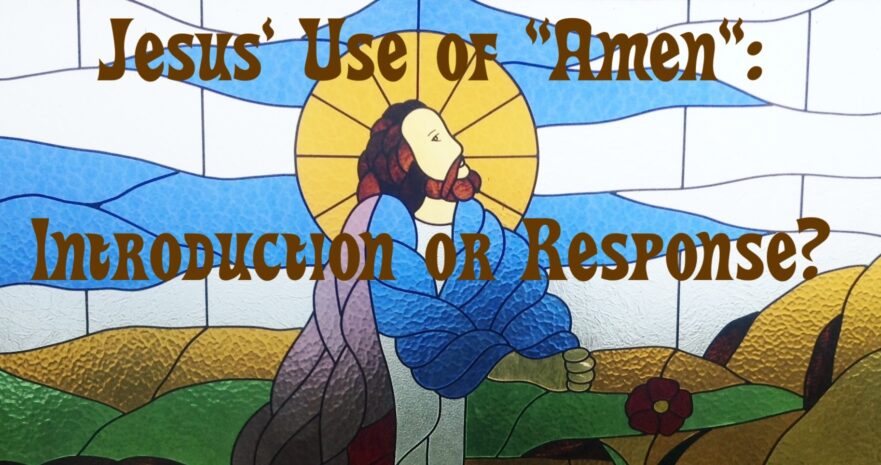Abba is an Aramaic word meaning “the father.” This word was borrowed by Hebrew speakers and used in the sense of “Daddy.” In lesson five, the word Abba is used to teach another Hebrew letter.
Hebrew Nuggets, Lesson 4: Jesus’ Hebrew Name (Part 4)

Jesus’ Hebrew name is composed of three syllables: ye·SHU·a‘. In this lesson we will learn the two sounds of the final syllable of Jesus’ name. The fifth sound in Jesus’ Hebrew name יֵשׁוּע is “a” as in the word “father.” Like the tseRE and the shuRUK, this sound is a vowel. The symbol used to represent this sound is called paTAḤ. It is indicated by a horizontal line below the letter with which it is sounded. Here it appears below the last letter of ישועַ (yeSHUa‘).
Jesus’ Use of “Amen”: Introduction or Response?

It is not surprising to find the word “amen” attributed to Jesus in the Gospels. What is unusual is to find “amen” used as the beginning of a statement rather than as a response.
Hebrew Nuggets, Lesson 3: Jesus’ Hebrew Name (Part 3)

In this lesson we will learn the two sounds of the second syllable of Jesus’ Hebrew name. The first sound of the second syllable of יֵשׁוּעַ (ye·SHU·a‘) is the “sh” sound. This is represented by ש (shin), the twenty-first letter of the Hebrew alphabet. Written with three points or teeth, it got its name from the Hebrew word for “tooth” because of the pictograph upon which it was based.
Hebrew Nuggets, Lesson 2: Jesus’ Hebrew Name (Part 2)

Many of Jesus’ words were spoken against a profoundly Hebraic background. We believe that a knowledge of Hebrew is central to understanding much of what Jesus said, and what was written about him in the Gospels. This is the second of a series of articles about the Hebrew language. Hopefully, these “nuggets” will encourage you to explore the riches Hebrew study can offer to those who want to understand the Bible more fully. The second sound in Jesus’ Hebrew name, יֵשׁוּעַ (ye·SHU·a‘), is a vowel. Hebrew vowels are represented by signs that are placed under, or sometimes, to the left of consonants (letters). A vowel is pronounced after the consonant that carries its sign.
Hebrew Nuggets, Lesson 1: Jesus’ Hebrew Name (Part 1)

In my view, Hebrew is the key to understanding the Jewish background to Jesus’ words. Jerusalem Perspective, therefore, features a serialized Hebrew course for beginners. Each issue will include a bite-sized Hebrew lesson.
